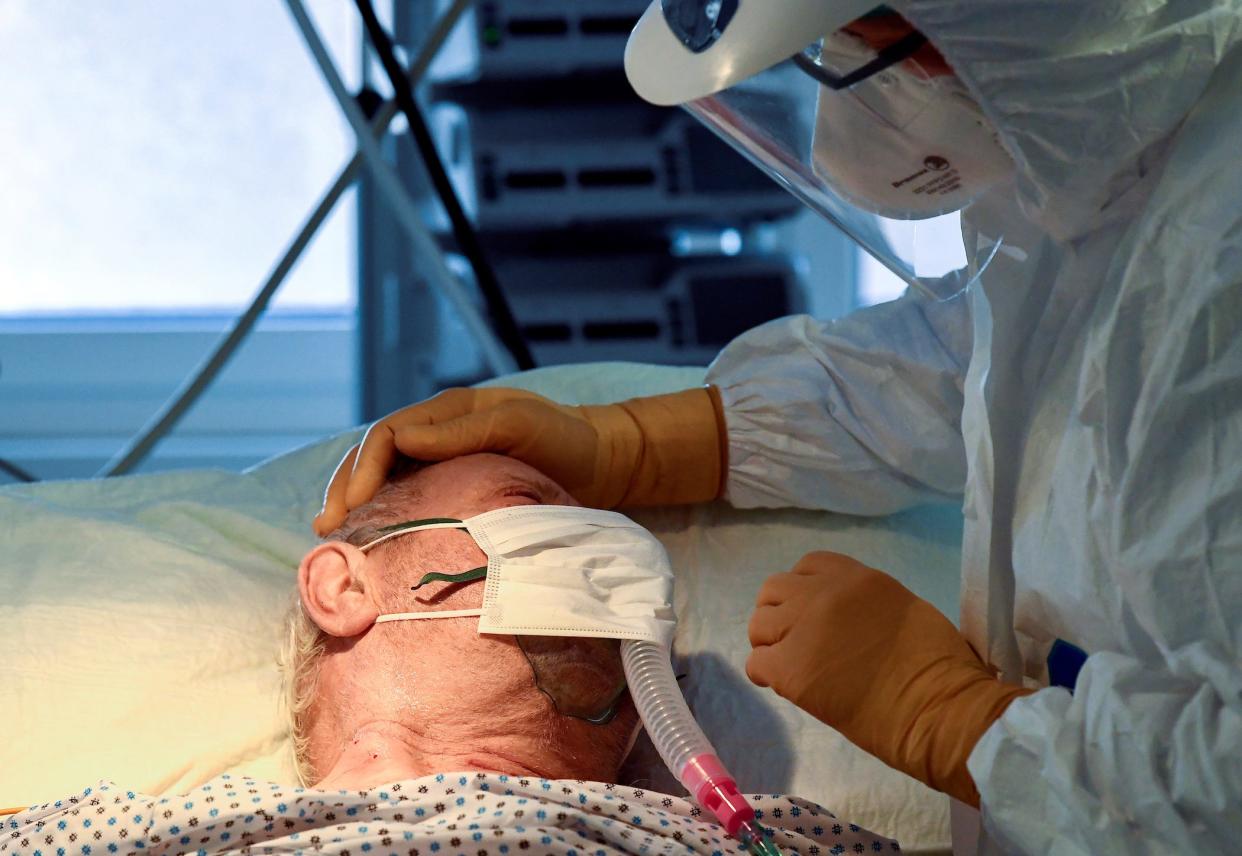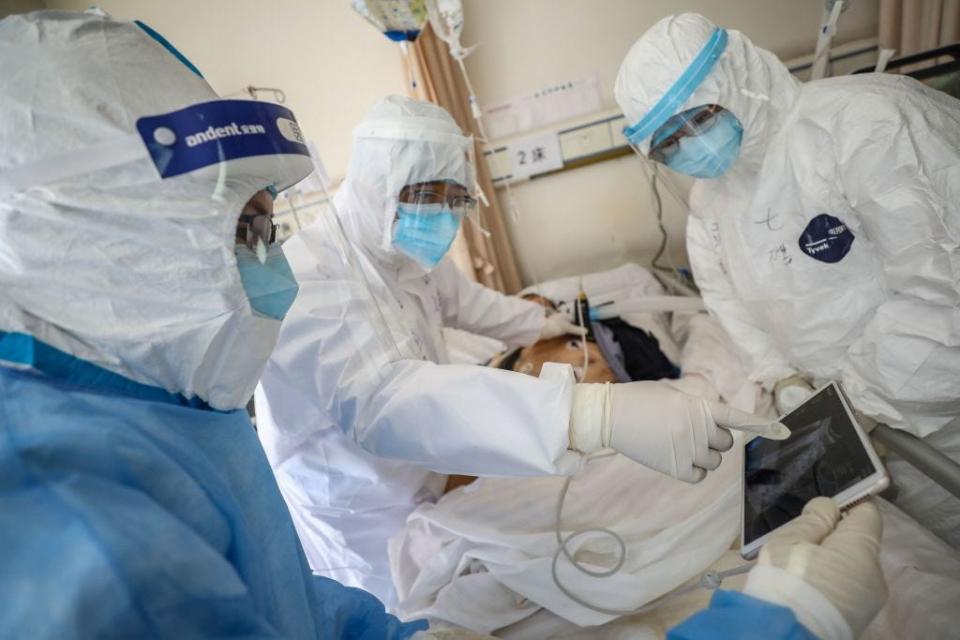3 clues in coronavirus patients' blood could help doctors predict their risk of death 10 days in advance, with 90% accuracy

It's challenging for doctors to predict which people who get the coronavirus will develop severe cases, facing a higher risk of hospitalization and death.
In a new study, researchers created a model that uses a trio of biological markers to predict whether a patient was likely to die from COVID-19.
The model was able to forecast the death of individual patients more than 10 days in advance with at least 90% accuracy.
Doctors are struggling to identify which coronavirus patients will develop severe cases that require hospitalization and put them at risk of death.
Newly published research may offer a way to accurately predict a patient's risk of dying from COVID-19. The authors of a study published Thursday in the journal Nature Machine Intelligence created a model that looks at three biological markers — which can be measured in a drop of blood — that can indicate whether a patient's case might get dangerously severe more than 10 days ahead of time, with at least 90% accuracy.
Taken together, these three clues could "play a crucial role in distinguishing the vast majority of cases that require immediate medical attention," the authors wrote, adding that their model "provides a simple and intuitive clinical test to precisely and quickly quantify the risk of death."
A trio of indicators that suggest a higher risk of death

STR/AFP via Getty Images
In Wuhan, China, research shows 14%-19% of infected patients became severely sick. Among those critically ill cases, the death rate was higher than 60%.
To identify commonalities between these severe cases, the researchers analyzed blood samples taken repeatedly from 485 coronavirus patients at Tongji Hospital in Wuhan, China, between January 10 and February 18. They tested for myriad kidney, heart, and blood-clotting issues, noted whether those patients had survived or died, then used machine-learning algorithms to look for biological patterns.
The results found that the following indicators can predict whether a patient had a higher risk of death than other infected people:
High levels of the enzyme lactic dehydrogenase (LDH). This is associated with lung damage and the type of tissue breakdown that happens during pneumonia.
Lymphopenia, the term for low levels of lymphocytes — white blood cells that defend the body against invading pathogens.
An increase in high-sensitivity C-reactive proteins, or hs-CRP for short. This indicates inflammation in the lungs.
Using those indicators, the computer model could predict what happened to the hospital patients 10 days in advance of their clinical outcomes.
"The three key features, LDH, lymphocytes and hs-CRP, can be easily collected in any hospital," the researchers wrote in the study. "In crowded hospitals, and with shortages of medical resources, this simple model can help to quickly prioritize patients, especially during a pandemic when limited healthcare resources have to be allocated."
A coronavirus 'risk score'
Another study published this week took a similar approach, pinpointing 10 biomarkers that can help doctors assess individual patients' risk levels. That research, published in the Journal of the American Medical Association on Tuesday, suggested using these markers to determine the likelihood that a hospitalized COVID-19 patient will become critically ill — admitted to an intensive-care unit or put on a ventilator — or die.

ANGELA WEISS/AFP via Getty Images
The researchers retrospectively examined medical records from 1,590 patients who were treated in 575 hospitals across China between November 21, 2019 and January 31.
Two of those biomarkers overlap with those suggested in the Nature study: high levels of LDH and a high neutrophil-to-lymphocyte ratio (which is associated with lower levels of lymphocytes).
The other eight risk predictors include a history of cancer, high number of preexisting medical conditions, older age, shortness of breath, coughing up blood, unconsciousness, abnormal chest X-rays, and high levels of bilirubin (a substance in the blood that, in elevated amounts, indicates liver damage).
The researchers used those 10 indicators to develop an online coronavirus risk "calculator" that could help predict which hospitalized COVID-19 patients will become critically ill.
That prediction tool could enable doctors and healthcare workers optimize hospital resources, the study authors wrote.
"If the patient's estimated risk for critical illness is low, the clinician may choose to monitor, whereas high-risk estimates might support aggressive treatment or admission to the ICU," they said.
Read the original article on Business Insider

